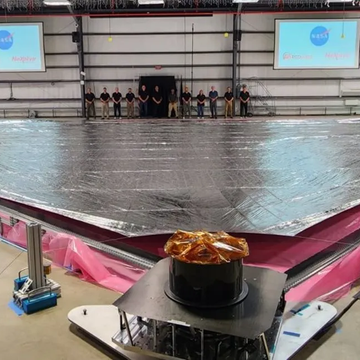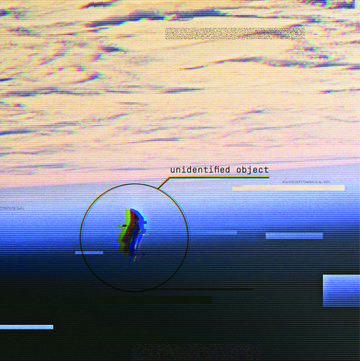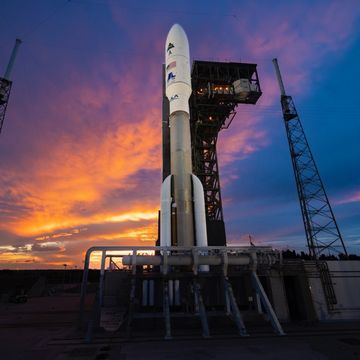Update 6/19/18: At a meeting of the National Space Council in Washington D.C. on Monday, June 18th, President Trump called on the Pentagon to create a space force, saying "I am hereby directing the Department of Defense and Pentagon to immediately begin the process necessary to establish a Space Force as the sixth branch of the armed forces." While the Pentagon can create a plan for a space force, the power to finalize such an organization and to fund it ultimately falls with Congress.
The idea of the space force is nothing new. Just this year the House of Representatives tried to create a sixth branch of the military in the 2018 National Defense Authorization Act, but the plan died in the Senate. Yesterday, however, Trump revived these hopes. “We have the Air Force, we’ll have the Space Force,” he said at a Marine Corps airbase.
The Air Force, which runs most of America's space-related defense activities, is strongly opposed to the Space Force. And there are plenty of hurdles to clear, political and otherwise, before the United States comes close to realizing a real Space Force.
What's more interesting is why America needs a space force in the first place. The answers to that question emerged from a House or Representatives meeting in the wake of Trump's announcement, in which space war experts tore into the issue before the House Armed Services Committee.
Why a Space Force?
“When I was head of STRATCOM I thought I was commanding the U.S. space forces,” said Air Force Gen. Robert Kehler (ret.), the former commander of U.S. Strategic Command. Like many who come from USAF, he's lukewarm on the idea of a Space Force. (The Secretary of the Air Force sidestepped questions about Trump in a separate meeting yesterday.) But he reiterated to the committee that the U.S. military must change its mindset about space.
American forces must “gain and maintain space superiority” as a condition for fighting, he said. This echoes the way the USAF first gains control of the airspace above before engaging in a ground campaign.
One reason that superiority may erode is that disparate space-related efforts are scattered across the Army, Air Force, and Navy, not to mention intelligence officers, National Reconnaissance Office and Space and Missile Systems Center. Doug Loverro, a former DoD Deputy Assistant Secretary of Defense for Space Policy, noted that fighting in space is different than fighting anywhere else, in the same way that the Navy prepares for unique combat at sea. “We lack that focus for space, one of our five main warfighting domains,” he said.
Loverro joked that people have been blaming him for Trump’s endorsement of a new service. “I’m ready to rip the band aid off,” he said. Yet even he concedes a new service may not be needed. “We don’t need to move it from the USAF to create the space smart-force we need,” he said.
What the military does need, he said, is to create career paths for people who specialize in space. To stay ahead over the next half-century, the United States needs to “grow the space leaders.” He compared the foundation of the U.S. Air Force, which guaranteed the expertise in personnel, led to the United States’ dominance in the air. “The same will be true for space,” he said.
Todd Harrison, Director of Aerospace Security Project, Center for Strategic and International Studies, advocated for “a dedicated cadre of space acquisition professionals” who can take advantage of the “renaissance” sweeping the commercial space industry. He also suggested creating a capitol fund for rapid response and prototyping for space systems. “We have to evolve our thinking over time, and I think we’ve reached that point,” Harrison said. “It’s time to rethink our organizational thinking.”
Promise v. Reality
While the warfighting plans reflect the realities of space conflict, Kehler said, the Pentagon's space weapons strategy can’t catch up with the pace of the growing threats.
In 2016 the Pentagon released its Space Enterprise Vision, heralded as a new direction to elevate space in the eyes of the USAF. The document reads well, but Loverro said “The budget doesn’t reflect that vision.”
For example, Loverro noted a lack of tests or exercises dedicated to space war, especially ones that include allies, which is something the U.S. does consistently for air combat. Even worse, the funding supports “old school space architectures” like large satellites that are easier targets for adversaries, as opposed to using several smaller sats.
These threats, Loverro said, are already here. If a war broke out in the Pacific, commanders would have a hard time communicating with troops. “We have a SATCOM jamming threat today,” Loverro told Congress. “We have nothing on books until 2027 to solve that problem.”
He also cited institutional thinking as a constraint. The legendary scientist Johannes Kepler said there are infinite orbits to choose from, but only four are used. “We are not constrained by gravity or physics, but culturally we have a hard time moving away from them,” Loverro said. “It is convenient to be in geostationary orbit, but it is not militarily wise to be in geostationary orbit.”
Gen.Kehler said the stakes are high because the loss of critical assets in space could prove decisive in a future battle. Potential enemies know this and have been investing in weapons on the ground or in space to take out or jam satellites. “Time is not on our side,” he said.
This post was originally published on March 14th, 2018.
Joe Pappalardo is a contributing writer at Popular Mechanics and author of the new book, Spaceport Earth: The Reinvention of Spaceflight.













